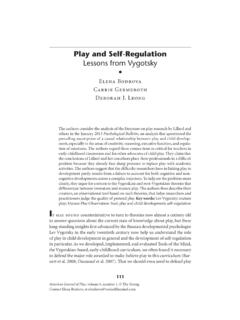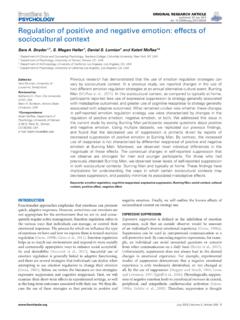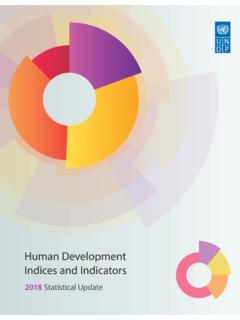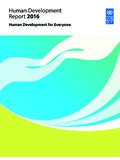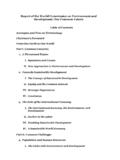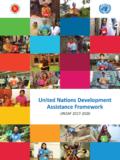Transcription of United Nations Development Programme - du.edu
1 REVIEW DIGEST: RIGHTS-BASED APPROACHES TO Development 54 United Nations Development Programme by Jason Keeler The central goal of Development has and will be the promotion of human well-being. Given that human rights define and defend human well-being, a rights-based approach to Development provides both the conceptual and practical framework for the realization of human rights through the Development process ( United Nations Development Programme : Regional Bureau for Asia & Pacific ). A recent trend in Development has been the implementation of rights-based approaches to Development , as opposed to Development as a human right, or human rights encompassed within the aim of Development . A rights-based approach to Development is unique and distinct from previous concepts of connectivity because it brings specificity and obligation to bear in the language of Development . Since a rights-based approach is a recent phenomenon, international Development organizations have varied in their adherence to the approach.
2 Some still support the idea that human rights and Development are separate fields, best approached independently from one another. Others have, conceptually, created practical tools for rights-based programs to advancing its meaning. The United Nations Development Programme (UNDP) has mainly taken a conceptual approach to incorporating a human-rights based approach into Development . Practical programming through which the UNDP has established a human-rights based approach to Development is evident in some of the organizations projects and reports. The UNDP has historically been quite limited in its human rights reporting within their Development work. In general, it appears that the UNDP s work on rights has leaned heavily toward governance institutions. With the focus limited to governance, a plethora of literature has surfaced on the UNDP s role in promoting human rights through governance projects in Development . Other vehicles through which the UNDP promotes human rights in Development are: energy/environment, poverty, and gender projects.
3 Those areas, along with a stress on governance, constitute the bulk of the UNDP s work in Development along a human rights approach. The UNDP s national and regional Development reports, articles authored and co-authored by the UNDP, and books and journals covering the Development projects undertaken by the UNDP are all important sources for analyzing the UNDP s involvement in the recent attempts at incorporating a rights-based approach to Development . Background Resources Brooke Ackerly. 2003. Fields of Protest: Women s Movements in India / Feminists Doing Development : A Practical Critique / Human Development Report 2000: Human Rights and Development / Women and Human Development : The Capabilities Approach (Book). Signs: Journal of Women in Culture & Society. 29(1): 248. Abstract: Reviews several books on political activists. Fields of Protest: Women s Movements in India, by Raka Ray; Feminists Doing Development : A Practical Critique, edited by Marilyn Porter and Ellen Judd; Human Development Report 2000: Human Rights and Development by United Nations Development Programme , and Women and Human Development : The Capabilities Approach, by Martha Nussbaum.
4 HUMAN RIGHTS & HUMAN WELFARE 55 Chandra Muzaffar. 1993. Double Standards in the West. World Press Review. 40 (9): 17. Abstract: States that the United Nations Development Program (UNDP), in its Human Development Report: 1992 observes that for the first time in human history, the world is close to creating a single, unified global system. Questions impact of this global system upon Nations and communities and upon human beings and human rights; Control of global economy; Direct link between poverty and political rights; Reported from the Third World Network Features agency of Penang, Malaysia. National Council of Applied Economic Research. In Collaboration with the Planning Commission, the United Nations Development Programme and other United Nations Agencies. Abstract: Sequel to the India HDR, the South India HDR and the West and Central India HDR. Includes statistical tables. U. Nations . 2003. Human Development Report. New York: UNDP. Abstract: The Human Development Report 2003 discusses the Millennium Development Goals (MDGs)--the targets set for reductions in poverty, improvements in health and education, and protection of the environment around the world by the year 2015.
5 In September 2000, world leaders pledged to achieve the MDGs, including the overarching goal of cutting poverty in half by 2015. This report examines the progress made towards reaching these goals on a country-by-country basis. The Human Development Report 2003 also features a wide variety of national Development indicators for 174 countries including demographic trends, educational levels, gender disparities, and macroeconomic indicators. It is an important tool in the formulation of government policy. Edelberto Torres-Rivas. 2005. UNDERSTANDING POLITICAL VIOLENCE AND POLITICAL CHANGE IN GUATEMALA. Journal of Third World Studies. 22 (1): 319. Abstract: Reviews three books on political violence in Guatemala. Buried Secrets, Truth and Human Rights in Guatemala, by Victoria Sanford; Terror in the Countryside: Campesino Responses to Political Violence in Guatemala, 1954-1985, by Rachel May; Dictating Democracy: Guatemala and the End of Violent Revolution, by Rachel M.
6 McCleary. UNDP. 2004. Democracy in Latin America: Towards a Citizens Democracy (Report and Annexs). 987-0085-X. Abstract: By combining quantitative indicators and detailed interviews with in-depth surveys and an on-going dialogue with a cross-section of prominent leaders and opinion formers across the region, the report provides a comprehensive analysis of the state of democracy in Latin America. Human Rights Initiatives 1992. Honesty International proposed. Futurist. 26 (5): 8. Abstract: Comments on the proposed formation of an Honesty International organization, as well as how such an organization could monitor corruption just as Amnesty International monitors and publicizes human-rights abuses. Includes an overview of the proposal as detailed by the United Nations Development Programme in its Human Development Report 1992. REVIEW DIGEST: RIGHTS-BASED APPROACHES TO Development 56 1991. Measuring human freedom. Futurist. 25 (6): 46. Abstract: Observes that more of the world s people are enjoying more freedoms now than was the case five years ago.
7 Includes statistics from the United Nations Development Programme (UNDP) which has devised a Human Freedom Index and provides evidence of a high correlation between a country s Development and freedom. INSET: The Human Freedom Index. 2002. No Development Without Human Rights. Chronicle. 39 (3): 56. Abstract: Examines the relationships between human rights and Development . Analysis of the content of the Declaration on the Right to Development , the role of human rights in Development especially within the context of rapid economic globalization, and the adoption of a policy on integrating human rights with sustainable human Development by the United Nations Development Program. 1996. The Other Human Rights. New Internationalist. 27 (5): 18. Abstract: Presents the Human Development Index (HDI) compiled by the United Nations Development Program. Brooke Ackerly. 2003. Fields of Protest: Women s Movements in India / Feminists Doing Development : A Practical Critique / Human Development Report 2000: Human Rights and Development / Women and Human Development : The Capabilities Approach (Book).
8 Signs: Journal of Women in Culture & Society. 29 (1): 248. Abstract: Reviews several books on political activists. Fields of Protest: Women s Movements in India, by Raka Ray; Feminists Doing Development : A Practical Critique, edited by Marilyn Porter and Ellen Judd; Human Development Report 2000: Human Rights and Development by United Nations Development Programme , and Women and Human Development : The Capabilities Approach, by Martha Nussbaum. Khabir Ahmad. 2000. United Nations Calls for More Effort into Equal Human Rights. Lancet. 356 (9224): 145. Abstract: Focuses on the Human Development Report 2000 released by the United Nations Development Programme (UNDP) that asserts that human rights must include economic, social, and cultural rights. Opinion as to why this reflects a shift in the way the UNDP looks at human Development and consideration of poverty as a major human-rights challenge. J. Dias Clarence and Leckie Scott. HUMAN Development AND SHELTER: A HUMAN RIGHTS PERSPECTIVE.
9 Http://hdr. undp. org/docs/publications/ocational_papers/o c21a. htm. Abstract: Gives general background on the relationship between human rights and Development . Argues that an International Law of Development is expressed by various covenants and treaties. Discusses how international law relates to housing rights in the context of Development , and common misperceptions about the right to housing. Chandra Muzaffar. 1993. Double Standards in the West. World Press Review. 40 (9): 17. Abstract: States that the United Nations Development Program (UNDP), in its Human Development Report: 1992 observes that for the first time in human history, the world is close to creating a single, unified HUMAN RIGHTS & HUMAN WELFARE 57global system. Questions impact of this global system upon Nations and communities and upon human beings and human rights, control of global economy, direct link between poverty and political rights, and reported from the Third World Network Features agency of Penang, Malaysia.
10 H. O. Sano. 2000. Development and Human Rights: The Necessary but Partial Integration of Human Rights and Development . Human Rights Quarterly. 22 (3): 734-752. Abstract: The article focuses on the need for integrating human rights and economic Development . This article attempts to explain the character of this convergence and to make proposals as to how it can be achieved. First, a brief explanation is given as to why convergence is happening just now. Second, the history and background of human rights and Development are discussed more fully in order to identify the essential points and possibilities that they share. Finally, the roles that the two disciplines have played in Danish aid policy are examined, providing a concrete background for discussion of the obstacles and opportunities for further integration. It is appropriate to think of human rights and Development research as connected because of two predominant tendencies of the 1990s. The first tendency is that the demands of developing countries for social provisions increasingly won support as internationally accepted norms or entitlements.



